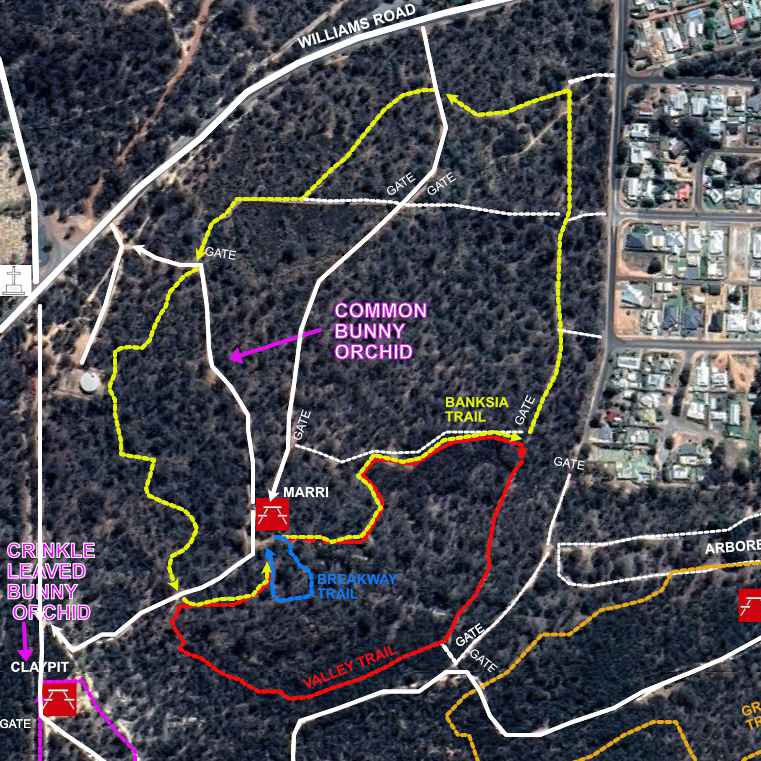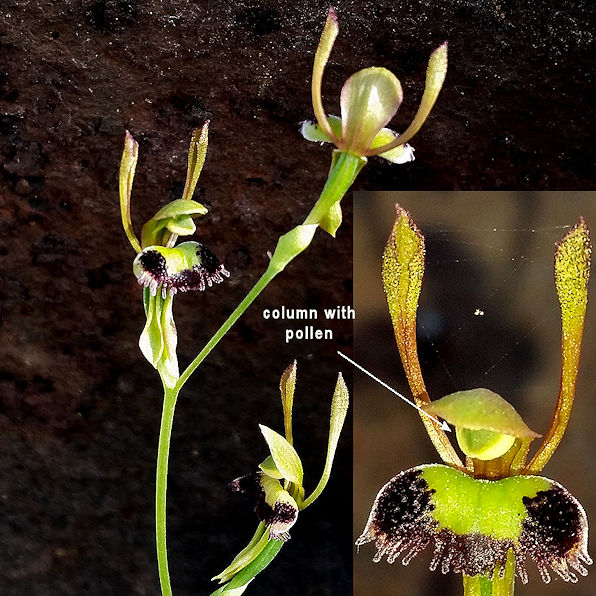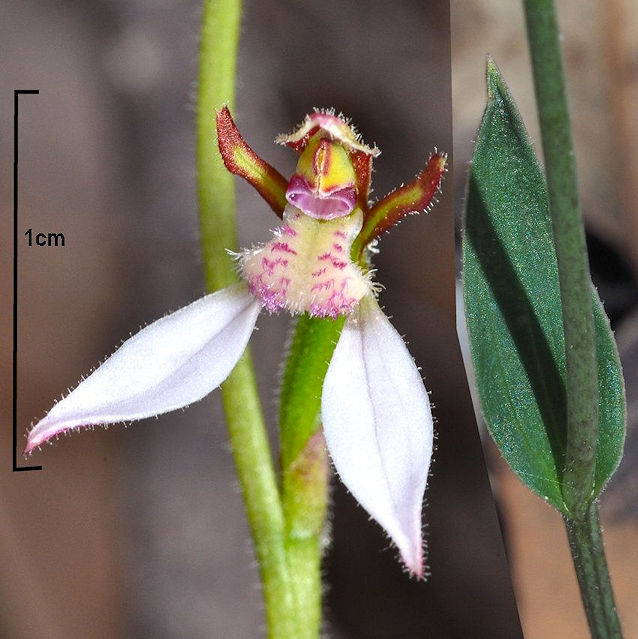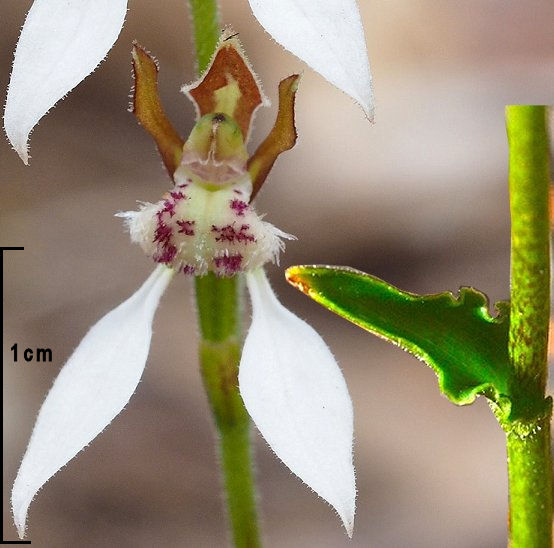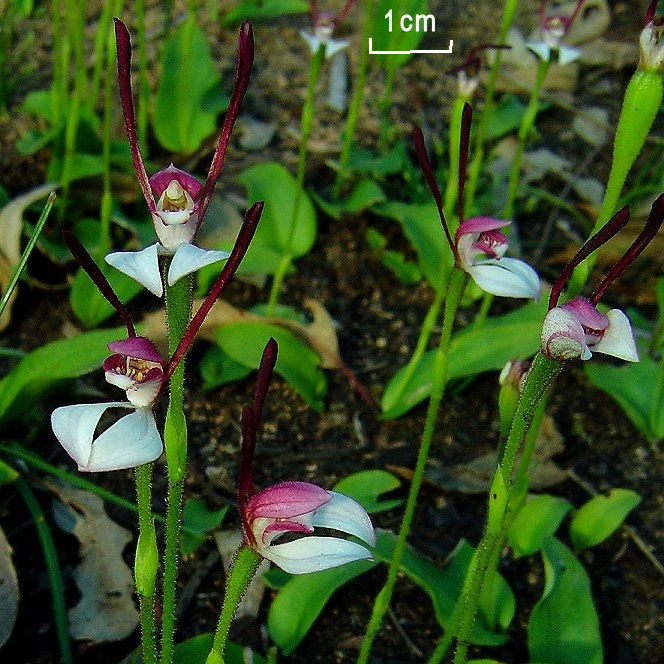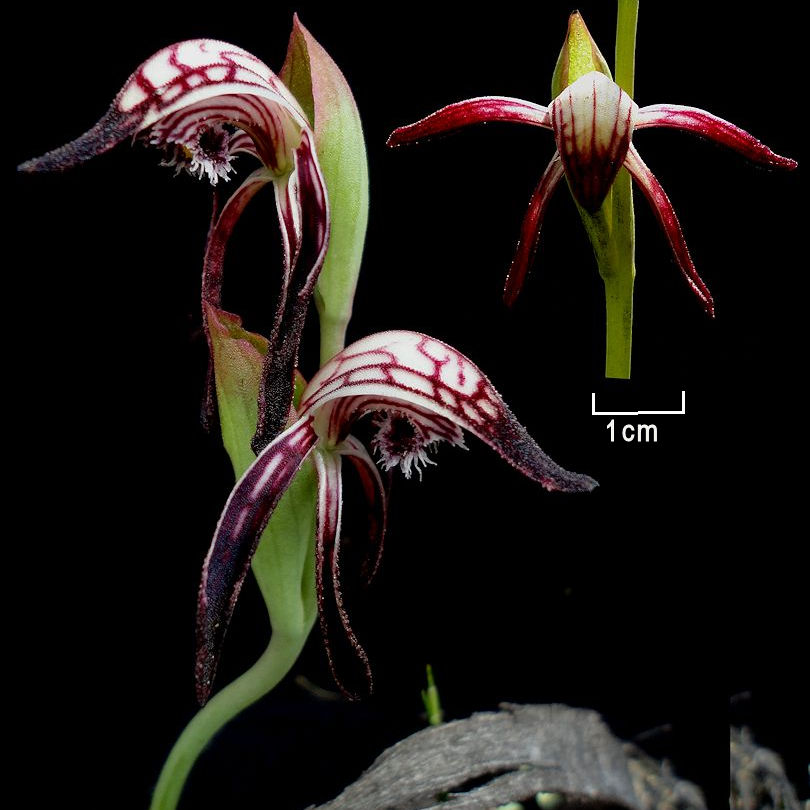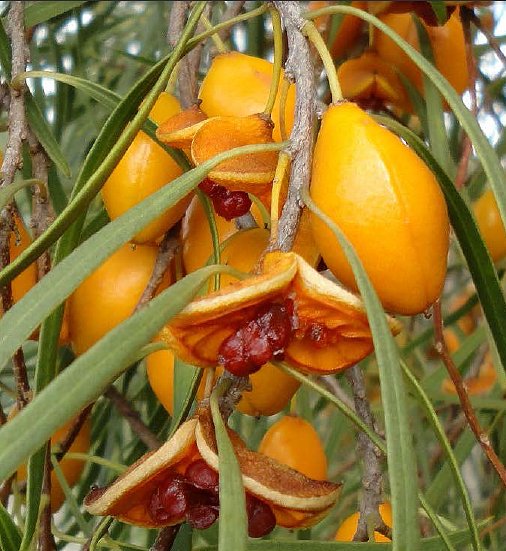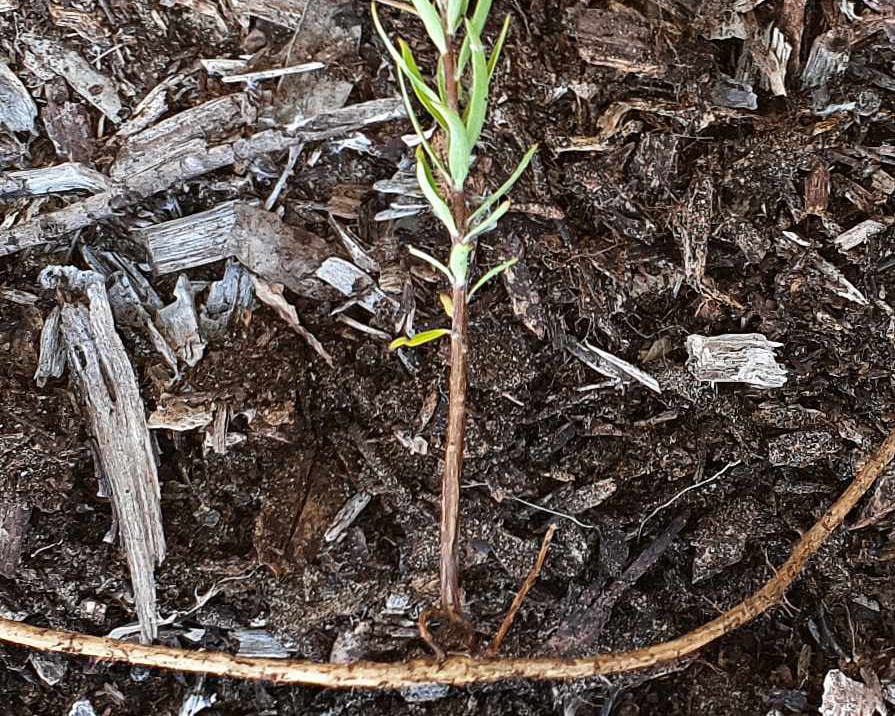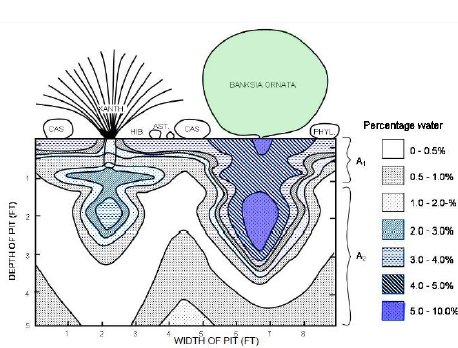
For a long while I have noticed that some old tracks remained bare decades after being protected from traffic although gravelly soils often recovered faster than sands or clays. The diagram on the left shows that native plants can selectively channel water down the stem to their roots. I have wondered whether a part of the revegetation problem is due to rainfall being unable to penetrate soil after long term plant removal. Last Saturday I noticed erosion on a sandy track after only 7mls rain.
You may have noticed bare areas that look like they have been dug by a deranged rabbit. Not so, this is the work of your humble correspondent, thinking that it helps new plant growth. Am I doing any good or just keeping fit enough to remain competitive at table tennis?
Yesterday I decided to answer this question by digging pits after 25mm rain on sandy and horrible clay parts of a closed track below a breakaway. The sandy pit below shows that the undisturbed topsoil was barely wet, except under the shallow hole that allowed time for the water to overcome the highly water repellent surface.
Conclusion: Reducing water flow by digging pits and increasing surface roughness will greatly improve plant regeneration.
Deeper pits are needed on clay soils. Hmm.....I need to start a Foxes Lair boot camp. Free entry and tuition!


